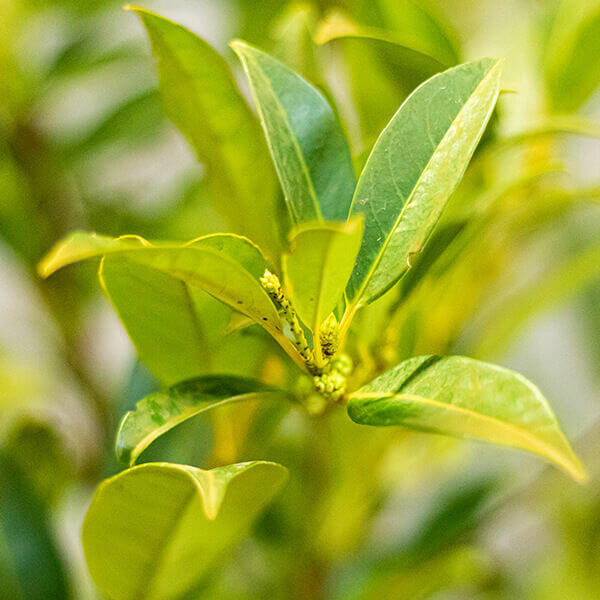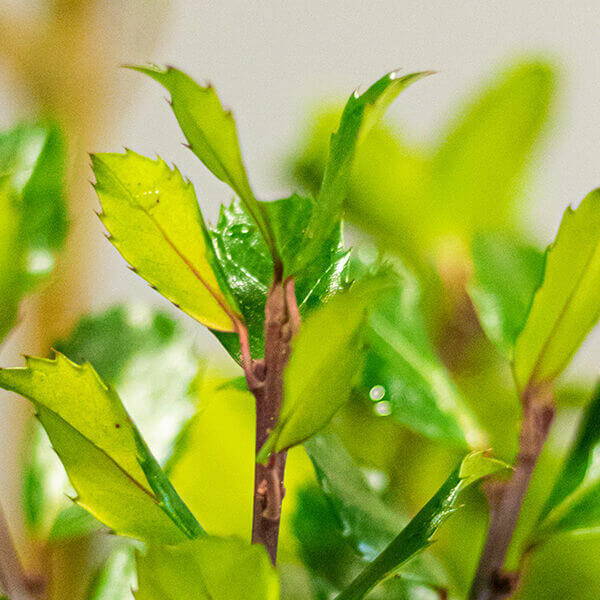Hedge Plants For Vertical Gardens
Improve your garden's appeal with rich hedge varieties such as Yew (Taxus), Thuja, Laurel, Photinia, and Bamboo, commemorated for their structural integrity and environmental advantages.
Yew and Thuja provide evergreen protection and winter season resilience, while Laurel provides rapid growth and broad, aromatic leaves.
Photinia adds seasonal appeal with its lively red foliage, and Bamboo lends a low-maintenance, peaceful atmosphere.
These hedges enhance air quality, decrease sound, and develop tranquil, private spaces.
Correct planting, spacing, and maintenance make sure energetic growth and environmental consistency.
Explore how these lavish varieties can elevate your garden's charm and wellness.
Secret Takeaways
Transform Your Garden With Lush Hedge Varieties
- Select Yew for its dense, evergreen growth and unequaled durability.
- Opt for Laurel for its fast growth and broad leaves, guaranteeing fast personal privacy.
- Choose Photinia for its vibrant seasonal foliage, which turns a striking dark red.
- Utilize Bamboo for a low-maintenance, winter-hardy hedge with aesthetic appeal.
- Space plants 2-3 per meter and prune routinely for ideal development and health.
Popular Hedge Plants
When changing a garden with rich hedge ranges, it's vital to think about popular hedge plants such as Yew, Thuja, Laurel, and Photinia due to their unique characteristics and benefits.
Yew (Taxus) is extremely respected for its durability and thick, green development, making it a prime option for sustaining landscapes.
Thuja is kept in mind for its evergreen foliage and robust winter season resilience.
Photinia adds seasonal vibrancy with red leaves that darken gradually, developing vibrant visual appeal.
Laurel uses quick development and aromatic, broad leaves, suitable for quick privacy.
Additionally, Bamboo is an outstanding choice for ambiance, offering a low-maintenance, winter-hardy alternative that boosts the garden's aesthetic with its stylish, swaying canes.
These selections deal with a range of horticultural needs and preferences.
Advantages of Garden Hedges
Garden hedges use a plethora of advantages, making them a valuable addition to any landscape. These natural barriers are cost-effective to carry out and offer considerable wind protection, boosting air flow and contributing to sound reduction. The dense foliage of hedges like Thuja and Beech makes sure privacy by blocking exposure, creating a secluded and tranquil environment.
Hedges also play a vital function in microclimate regulation, supplying a stable environment that cultivates plant growth and decreases temperature variations. Their complex leaf structures filter pollutants, improving air quality and adding to a healthier garden environment.
Furthermore, hedges stand out in noise decrease, absorbing and deflecting acoustic waves to lower ambient noise levels. This double functionality of offering both visual and acoustic personal privacy boosts the overall harmony and aesthetic appeal of any garden.
Planting and Maintenance Tips
For an effective hedge, meticulous preparation of the planting area is vital. Ensure the soil has appropriate pH and drainage to support strong root development.
Area the plants appropriately for the selected types. Water the hedge regularly during its initial development stage, adjusting as needed with seasonal changes.
Implement a organized insect control and disease avoidance method, utilizing organic or chemical treatments when needed. Frequently inspect for aphids, mites, and fungal infections.
Apply mulch to keep wetness and reduce weeds. Seasonal pruning promotes thick development and air circulation, important for plant health.
Following these guidelines will help you cultivate a dynamic, properly maintained hedge that boosts the beauty of your garden.
Spacing and Trimming Guidelines
Spacing and Trimming Guidelines
Appropriate spacing and trimming are essential for cultivating healthy, aesthetically appealing hedges. Sufficient spacing guarantees each plant gets adequate nutrients, light, and air flow.
Follow these guidelines for ideal hedge maintenance:
- Spacing: Position hedge plants 2-3 plants per meter to encourage robust growth.
- Pruning Techniques: Regular pruning is essential for maintaining desired hedge height and shape. Trim brand-new development in summertime and cut down older wood throughout winter.
- Seasonal Care: Adjust cutting approaches and schedules according to seasonal requirements to guarantee plant health.
- Hedge Height: Routinely screen and trim to maintain the preferred hedge height and attain consistent aesthetic appeals.
Sticking to these actions will ensure your hedge flourishes, enhancing both the appeal and performance of your garden.
Selecting the Right Hedge
Choosing the Right Hedge
Picking the proper hedge involves evaluating elements such as mature height, foliage density, and environmental durability. Effective hedge plant selection requires understanding each species' growth characteristics and site-specific flexibility.
For instance, Yew (Taxus) uses outstanding longevity and thick growth, while Thuja is significant for its winter resilience. Furthermore, thinking about upkeep requirements is crucial; fast-growing types like Laurel or Privet demand routine trimming, whereas low-maintenance options like Bamboo or Ivy might be preferable for those seeking very little maintenance.
Environmental factors such as soil type, light accessibility, and moisture conditions must likewise direct the choice process. This cautious technique guarantees the picked hedges will thrive, offering both practical and aesthetic benefits to the garden landscape.
Shipment and Planting Advice
To ensure your hedge plants grow, they should be delivered by specialized carriers and planted promptly upon arrival.
Follow these important actions for effective planting:
- Soil Preparation: Enrich the soil with organic matter to enhance drain and nutrient material.
- Planting Depth: Create a trench twice the width and equivalent to the depth of the root ball.
- Watering Strategies: Water thoroughly after planting, keeping the soil consistently wet but not saturated.
- Mulching: Apply a layer of mulch to keep wetness and reduce weeds.
Consumer Assistance and Service
Offered the essential role of timely assistance in horticultural pursuits, our customer support team is offered 6 days a week through telephone, e-mail, and social media to provide expert recommendations and swiftly address any concerns. Their commitment to fast action times guarantees consumer satisfaction by dealing with inquiries related to plant health, ideal planting techniques, and maintenance schedules.

Telephone
Six days a week
Within 24 hours
This comprehensive support group, reinforced by an excellent 9.3/ 10 customer ranking, highlights our commitment to boosting the gardening experience for every single customer.
Regularly Asked Concerns
How Long Does It Take for Hedge Plants to Establish?
Hedge plants generally require one to three years to become fully established, with the exact duration varying by types and growing conditions.
Reliable care throughout this important duration is necessary for robust growth. Constant watering, alert weed control, and suitable fertilizer application are essential in promoting strong root advancement.
For instance, fast-growing types like Laurel might develop quicker, while slower-growing ranges such as Yew may take longer. Diligent upkeep accelerates the facility procedure, leading to healthy and thick hedges.
What Are the Finest Hedge Plants for Personal Privacy?
The concern of the finest hedge plants for personal privacy involves assessing evergreen and deciduous choices.
Evergreen hedges like Thuja, Laurel, and Cypress offer year-round coverage, guaranteeing continuous privacy.
On the other hand, deciduous hedges such as Beech use seasonal personal privacy, shedding leaves in chillier months.
Key maintenance tips for personal privacy hedges include regular cutting, fertilizing in spring, and appropriate spacing-- generally 2 to 3 plants per meter.
In addition, constant watering and diligent weed elimination are essential for promoting healthy, dense development.
Can Hedge Plants Attract Wildlife to My Garden?
Yes, hedge plants can bring in wildlife to your garden by offering necessary advantages like shelter, food, and nesting sites, thereby boosting local biodiversity. Yew, holly, and laurel are excellent for drawing in birds, while ivy supports a variety of bugs.
Nevertheless, it's essential to keep in mind that there are some disadvantages, such as increased upkeep to manage bugs and regular maintenance. Thoroughly selecting and keeping hedge varieties can help stabilize these drawbacks and benefits, eventually cultivating a sustainable and lively ecosystem in your garden.
Are There Any Blooming Hedge Plants Available?
Yes, there are flowering hedge plants available that can improve the charm of your garden.
For instance, Elaeagnus, also known as Olive Willow, produces aromatic white flowers in the fall, adding a touch of beauty.
Photinia, another popular option, showcases lively red leaves that mature into a rich green, producing a vibrant visual result throughout the seasons.
To ensure these plants Browse this site flourish, it's necessary to practice proper pruning techniques and seasonal maintenance, such as trimming new development in the summer season and cutting down in the winter.
These measures will help preserve the health and visual appeal of your blooming hedges.
How Do I Avoid Bugs in My Hedge Plants?
To avoid pests in hedge plants, employ natural pest control methods and maintain proper hedge care. Introduce advantageous bugs like ladybugs, which take advantage of hazardous insects, to produce a well balanced community.
Routinely examine your hedges for signs of infestation and quickly get rid of any afflicted parts to prevent the spread. Guarantee the health of your hedges by applying balanced fertilizers and providing appropriate water.
Make use of mulching to maintain soil moisture and proper spacing to reduce plant stress and promote robust development. These practices jointly help in reducing pest concerns and keeping a healthy hedge.
Conclusion
In essence, selecting the best hedge varieties such as Yew, Thuja, and Laurel can change any garden into a serene sanctuary. These plants provide year-round plant, boost aesthetic appeal, and offer useful benefits like noise decrease and wind security.
Proper planting strategies, accurate spacing, consistent watering, and seasonal cutting are important for optimal development.
Trustworthy delivery services and expert consumer support make sure a seamless experience from purchase to planting, making it simpler than ever to raise your outdoor area.
Garden hedges offer a plethora of benefits, making them an important addition to any landscape. These natural barriers are economical to implement and offer significant wind security, enhancing air blood circulation and contributing to noise decrease. The thick foliage of hedges like Thuja and Beech guarantees personal privacy by obstructing visibility, producing a tranquil and remote environment.

Pruning Techniques: Regular pruning is important for maintaining desired hedge height and shape. Trim brand-new development in summertime and cut back older wood during winter.
Comments on “Hedge Plants For Year-round Privacy”